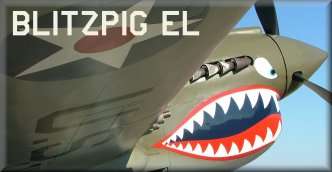
 |
|
|
|
#1
|
|||
|
|||
|
I think I must have read too many 'Commando' comics recently
|
|
#2
|
|||
|
|||
|
Taking out aircraft with an AR-15 in a parachute would be sweet.
|
|
#3
|
|||
|
|||
|
Maybe the co pilot in the Tiger moth should be armed with a 1928 thompson to fend off those pesky 109s
|
|
#4
|
|||
|
|||
|
I read of some german pilots wearing their Luger on combat missions. They decided it would be better to avoid dying of hypothermia.
|
|
#5
|
||||
|
||||
|
At this point the most carried sidearm used by German forces was the Walther P38. A far superior weapon than the complex, expensive to manufacture, and relatively malfunction prone P-06, what most people commonly call a "Luger". Both chambered in 9 X 19 Parabellum, or more simply called 9mm Luger.
If an RAF pilot carried a sidearm it would have been the Enfield No.2 Mk I, or the No.2 Mk.I*, chambered in what the British called 380/200 (.380" diameter bullet that weighed 200 grains), and what Americans call .38 Smith & Wesson. (Note: this is not the more modern 38 Special caliber, that is actually .357" in diameter).
__________________
 Personally speaking, the P-40 could contend on an equal footing with all the types of Messerschmitts, almost to the end of 1943. ~Nikolay Gerasimovitch Golodnikov |
|
#6
|
||||
|
||||
|
Quote:
The smaller the side arm was the more likely it was used as a side arm for flying personell. Those side arms with German Waffenamts Markings today are desired collectors items. |
|
#7
|
||||
|
||||
|
Quote:
Thanks for the info! I can understand why they would prefer the smaller pistols, by and large chambered in 32 ACP (7.65 Browning), over the large P38 or even the Luger. And it's really sort of a morale booster anyway, as we all know, a handgun will loose almost every time to a man with a rifle.
__________________
 Personally speaking, the P-40 could contend on an equal footing with all the types of Messerschmitts, almost to the end of 1943. ~Nikolay Gerasimovitch Golodnikov |
 |
|
|